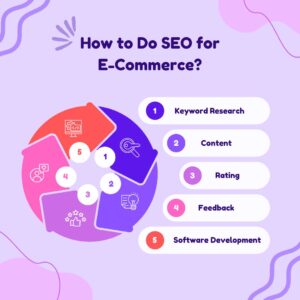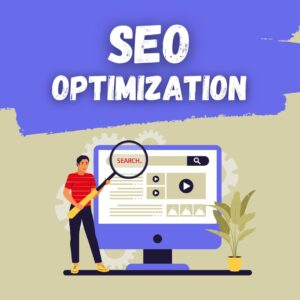On-Page SEO: A Blueprint for Digital Dominance
Introduction:
In the ever-evolving landscape of digital marketing, mastering on-page SEO is akin to wielding a powerful tool in your arsenal. As search engine algorithms become increasingly sophisticated, optimizing your website’s on-page elements has never been more crucial. From enhancing user experience to boosting organic traffic, every tweak you make contributes to your online visibility. Let’s delve into the intricacies of on-page SEO and unveil the blueprint for digital dominance.
Understanding On-Page SEO:
On-page SEO refers to the practice of optimizing individual web pages to rank higher and earn more relevant traffic in search engines. Unlike off-page SEO, which focuses on external factors like backlinks, on-page SEO deals with elements directly within your control. From meta tags to content optimization, every aspect plays a pivotal role in determining your website’s search engine ranking.
Key Elements of On-Page SEO:
Meta Tags Optimization: Crafting compelling meta titles and descriptions that accurately reflect your content while incorporating relevant keywords.
High-Quality Content: Creating engaging, informative, and keyword-rich content that resonates with your target audience and encourages them to stay on your site.
Keyword Placement: Strategically placing keywords throughout your content, including headings, subheadings, and body text, to signal relevance to search engines.
Optimized URL Structures: Ensuring your URLs are concise, descriptive, and contain relevant keywords to improve both user experience and search engine crawlers’ understanding of your content.
Internal Linking: Creating a network of internal links that connect different pages within your website, facilitating navigation for users and distributing link equity throughout your site.

The Blueprint for On-Page SEO Success:
Thorough Keyword Research: Conduct comprehensive keyword research to identify relevant terms and phrases that align with your content and target audience. Utilize tools like Google Keyword Planner, SEMrush, or Ahrefs to uncover valuable insights into search volume, competition, and user intent.
Content Optimization: Create high-quality, relevant, and engaging content optimized around your target keywords. Focus on addressing user queries, providing valuable information, and delivering a seamless user experience. Incorporate multimedia elements such as images, videos, and infographics to enhance readability and engagement.
Meta Tags Optimization: Craft compelling meta titles and descriptions that accurately summarize your content and entice users to click through to your website. Include relevant keywords naturally within these tags while maintaining readability and relevance.
URL Optimization: Structure your URLs to be concise, descriptive, and keyword-rich. Avoid using generic or cryptic URLs and instead opt for clear, intuitive URLs that provide users and search engines with valuable context about the page’s content.
Mobile-Friendly Design: Ensure your website is optimized for mobile devices to accommodate the growing number of mobile users and improve overall user experience. Implement responsive design principles, optimize page loading speed, and prioritize mobile usability to enhance accessibility and engagement.
Page Speed Optimization: Optimize your website’s loading speed to minimize bounce rates, improve user experience, and enhance search engine rankings. Compress images, leverage browser caching, and minimize server response time to streamline page loading times and deliver a seamless browsing experience.
Schema Markup: Implement schema markup to provide search engines with structured data about your content, enabling them to display rich snippets in search results. Enhance your visibility and click-through rates by incorporating schema markup for products, reviews, events, and more.
Conclusion:
Mastering on-page SEO is essential for maximizing your website’s visibility, attracting relevant traffic, and achieving digital dominance. By focusing on key elements such as content optimization, meta tags, URL structures, and user experience, you can enhance your website’s search engine rankings and drive sustainable organic growth. With a strategic approach and continuous optimization, you can establish your online presence, outshine competitors, and achieve long-term success in the digital landscape.

